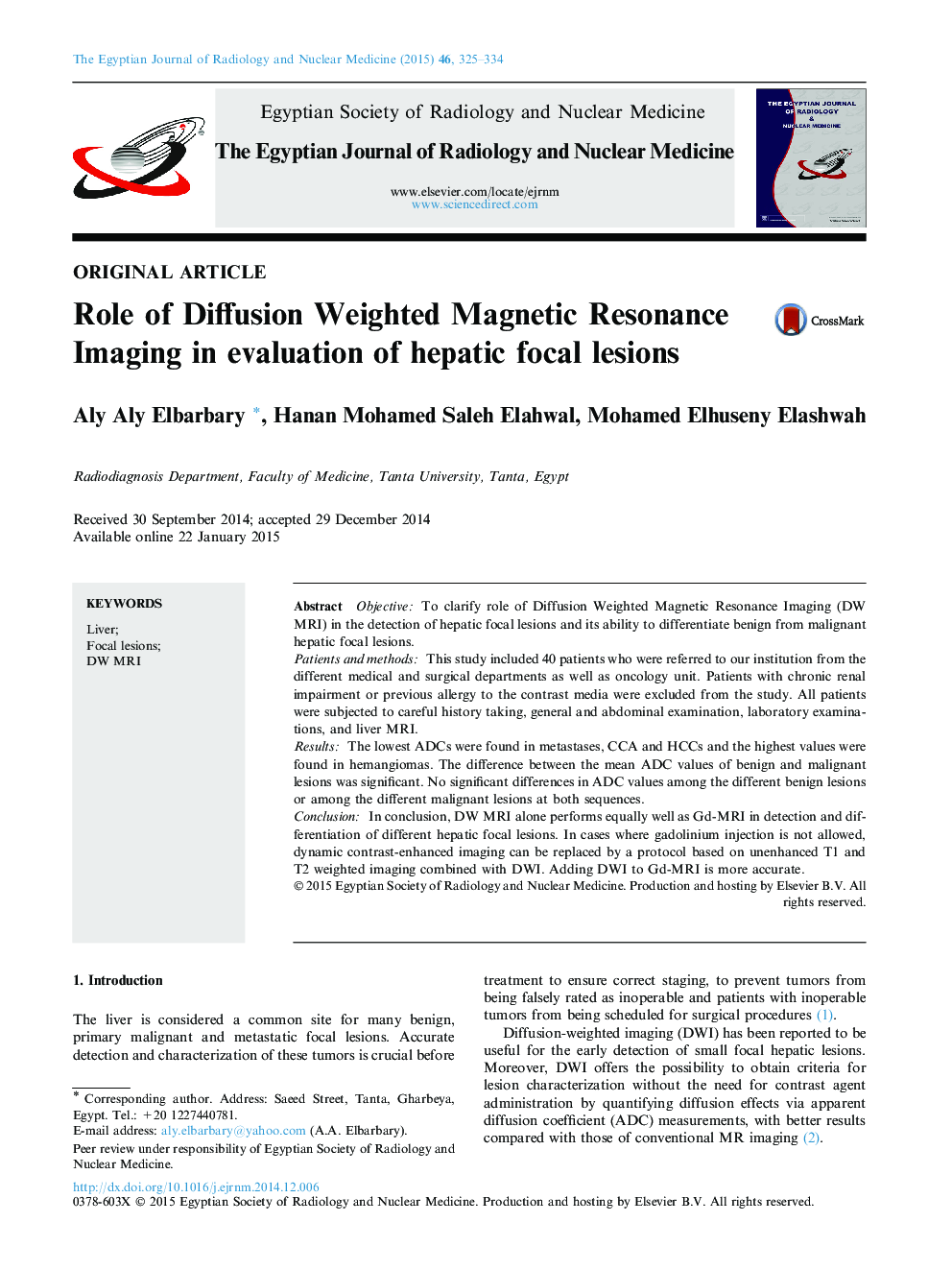| Article ID | Journal | Published Year | Pages | File Type |
|---|---|---|---|---|
| 4224175 | The Egyptian Journal of Radiology and Nuclear Medicine | 2015 | 10 Pages |
ObjectiveTo clarify role of Diffusion Weighted Magnetic Resonance Imaging (DW MRI) in the detection of hepatic focal lesions and its ability to differentiate benign from malignant hepatic focal lesions.Patients and methodsThis study included 40 patients who were referred to our institution from the different medical and surgical departments as well as oncology unit. Patients with chronic renal impairment or previous allergy to the contrast media were excluded from the study. All patients were subjected to careful history taking, general and abdominal examination, laboratory examinations, and liver MRI.ResultsThe lowest ADCs were found in metastases, CCA and HCCs and the highest values were found in hemangiomas. The difference between the mean ADC values of benign and malignant lesions was significant. No significant differences in ADC values among the different benign lesions or among the different malignant lesions at both sequences.ConclusionIn conclusion, DW MRI alone performs equally well as Gd-MRI in detection and differentiation of different hepatic focal lesions. In cases where gadolinium injection is not allowed, dynamic contrast-enhanced imaging can be replaced by a protocol based on unenhanced T1 and T2 weighted imaging combined with DWI. Adding DWI to Gd-MRI is more accurate.
